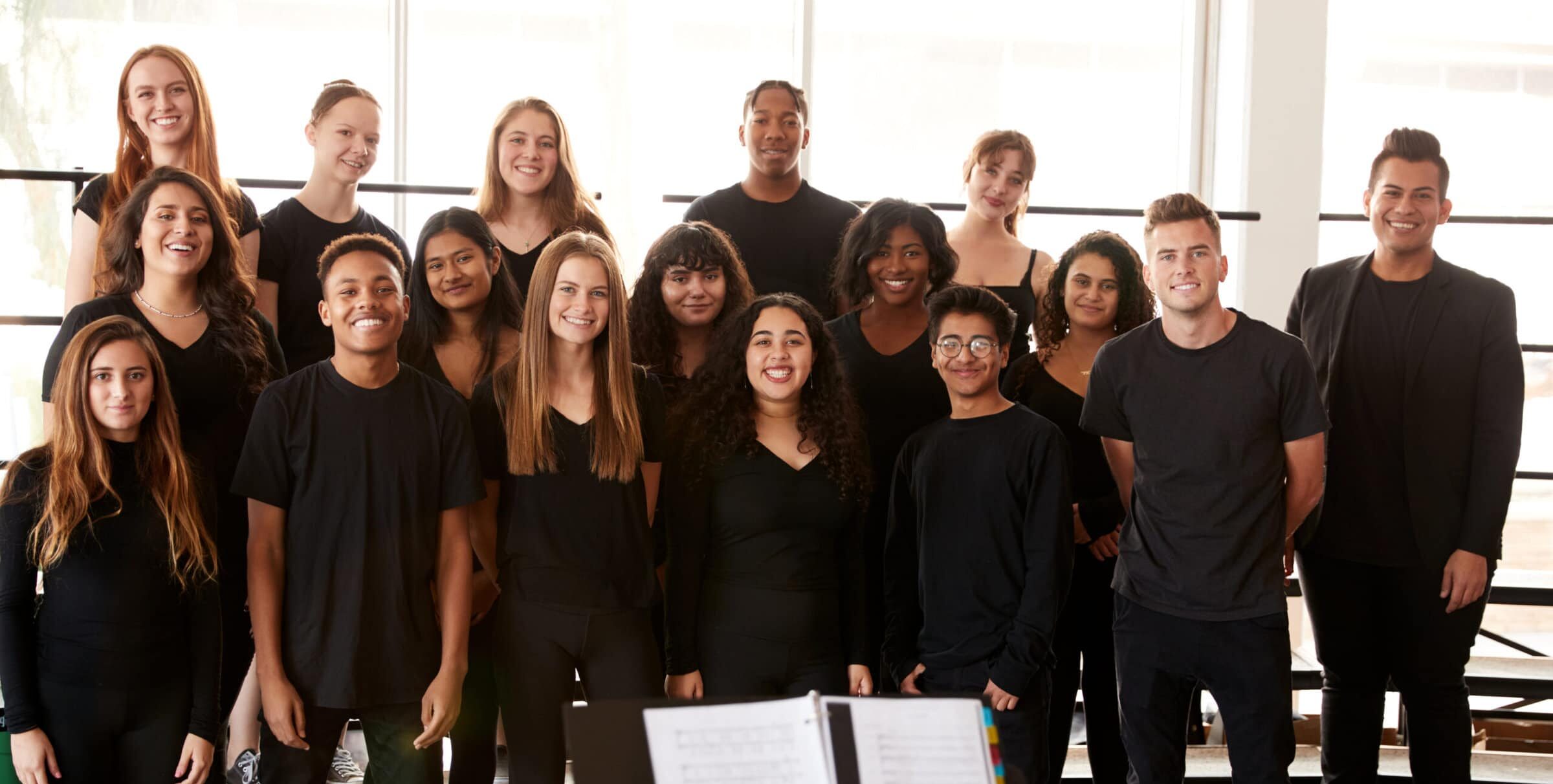Music Standards
The 2014 Music Standards are all about Music Literacy. The standards emphasize conceptual understanding in areas that reflect the actual processes in which musicians engage. The standards cultivate a student’s ability to carry out the three Artistic Processes of Creating, Performing, and Responding. (The National Coalition for Core Arts Standards, of which NAfME is a part, includes “Connecting” as a fourth Artistic Process. The music standards consider connecting to be embedded in the processes of Creating, Performing, and Responding.)
These are the processes that musicians have followed for generations, even as they connect through music to their selves and their societies. And isn’t competence in Creating, Performing, and Responding what we really want for our students?
- Students need to have experience in creating, to be successful musicians and to be successful 21st century citizens.
- Students need to perform – as singers, as instrumentalists, and in their lives and careers.
- Students need to respond to music, as well as to their culture, their community, and their colleagues.
The 2014 standards provide teachers with frameworks that closely match the unique goals of their specialized classes. The standards are presented in a grade-by-grade sequence from pre-K through grade 8, and discrete strands address common high-school music classes, such as Ensembles and Music Composition/Theory. The standards are provided in “strands” that represent the principal ways music instruction is delivered in the United States.
2014 Music Standards
- 2014 Music Standards (PK-8 General Music)
- 2014 Music Standards (Composition/Theory)
- 2014 Music Standards (Music Technology)
- 2014 Music Standards (Guitar/Keyboard/Harmonizing Instruments)
- 2014 Music Standards (Ensemble)
- 2014 Music Standards EUs, EQs, Definitions
- Proficiency Levels Explanation – Novice Intermediate and High School 2014 Standards
- 2014 Music Standards Glossary
- State Standards Adoption Toolkit
- National Core Arts Standards site for a searchable database of the standards in all the arts.
Opportunity to Learn Standards
What curriculum and scheduling, staffing, materials and equipment, and facilities are needed to support the music standards?
Student Assessment
The Model Cornerstone Assessments (MCAs) provide an instructional and assessment framework into which teachers integrate their curriculum to help measure student learning. Each school program has a unique population and circumstances that guide curricular decisions. The MCAs, designed by and for music educators, provide adaptable assessment tasks that will assist students through the each of the artistic processes outlined in the 2014 Music Standards, allowing them to demonstrate the quality of learning associated with the performance standards.
Additional Resources, Copyright, and Credits
- A historical note: In June 2014, the new National Standards were completed. Developed by the National Coalition for Core Arts Standards, and based on artistic processes, these include music standards prepared by NAfME.
Read the 2014 National Standards and create your own online Standards notebook.
The new standards replace those previously adopted in 1994 and represent a notable shift in the Coalition’s recommended approach to improving each student’s musical education experience, supporting educators with enhanced instructional strategies, and emphasizing the benefits of music education for the community at large.
Unlike national Common Core standards that have been widely criticized for narrowing student learning opportunities, the 2014 Music Standards aim to broaden and deepen learning opportunities for students.
Unlike controversial education standards mandated within other disciplines, the 2014 Music Standards were written by a team of professional music educators and vetted through a two-year inclusive public review process. The standards were developed by the profession for the profession, with a student-centered focus that respects each professional educator’s teaching style and unique contributions.
The goal of the 2014 standards is not to impose restrictive rules governing what to do or how to teach, but to provide voluntary and pragmatic flexible processes and strategies that can be welcomed, implemented, and assessed in every American school district.
Credits. The 2014 Standards were written by individuals with more than 1,800 years of experience teaching PreK-12 music: 540 years in general music, 1,000 years in ensembles, 130 years in teaching with and through technology, and 200 years of teaching theory/composition. In addition, the standards writing teams reached out to and involved a group of expert Research Advisers for input based on current pedagogical research. A list of the principal contributors appears at Core Music Standards Contributors.
Copyright. All rights reserved. Copyright in the National Core Arts Standards is held by the State Education Agency Directors of Arts Education (SEADAE) in trust for the National Core Arts Standards.
